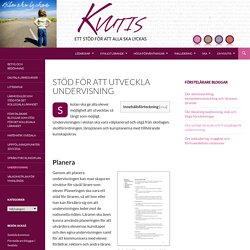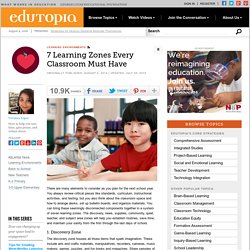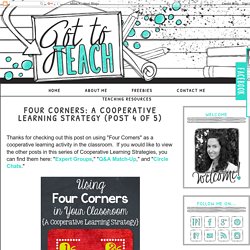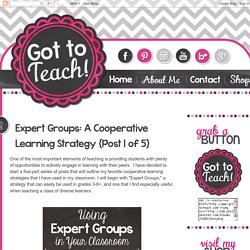

MATERIALBANKEN – Google Drive. Materialbanken – skolresurs.fi. Kamratbedöming + Lärarbedöming + Självbedömning + Digitala verktyg + Flippade klassrum = YES WE CAN! YES WE CAN!

Resultatet av just dina elevers lärande kommer att variera beroende på vem du är som pedagog, vad du har för relation till dina elever, hur skicklig du är på att ställa ”rätt typ av frågor”, hur du ser på lärande och hur långt du har kommit i användandet av digitala verktyg, med mera. En sak är säker: Om du använder dig av konceptet i rubriken på ett medvetet sätt kommer du att lyfta dina elever och få ett ”effektivt lärande”, åtminstonne om man lyssnar på J.Hattie och D.Williams, bland andra.
Digitala verktyg, formativ bedömning och flippade klassrum kan öppna helt nya möjligheter för lärande. YES WE CAN, säger Obama. YES WE CAN, borde hela Sveriges skickliga lärarkår ryta ut. (Många av de digitala verktygen nedan finns även som appar för iPad!) Både elever och pedagoger måste klart och tydligt veta vart de är på väg: Konkretisera målen tillsammans med eleverna. Diskutera/reflektera online/fånga upp åsikter och tankar anonymt…: Synliggöra via bloggar och wikispaces: Lektionsbanken.se - Lärare inspirerar lärare.
Länkskafferiet - Skolämnen. Denna sida lär ut konsten att tala inför publik.

Uppbyggnaden av ett tal och hur det ska framföras för att fånga åhörarna beskrivs. Lyssna på stora tal av Churchill, Kennedy, Martin Luther King, Olof Palme, Ronald Reagan, Mona Sahlin, Earl Spencer vid Dianas begravning, Bill Clinton, Tony Blair och kung Carl XVI Gustaf. Insticksprogram behövs i webbläsaren för att lyssna. Taggar: presentationsteknik, retorik, svenska, tal, talekonst.
Hantera kursplanering och dela resurser för undervisning. Mall för en standardiserad lektion. Lektionsplanering skrivbar 12 september 2016. Orientera dig på bloggen! – Kooperativt Lärande. Tryck på bilden ovan för en sammanställning av alla strukturer (övningar) på bloggen! Några viktiga inlägg: Hur man skapar lärande grupper! , Strategi: Roller, Gruppstärkande övningar!
, Strategi: Lärpar, Alternativ till handuppräckning, Samarbetsfärdigheter, Klassrum 2.0 Läs gärna denna först för att få en förståelse över vad denna blogg försöker förmedla – ett lärande genom samarbete. Här är en kort sammanställning över metodiken. InnovativeTeachingToolbox. Planeringsprocessen och bedomningsaspekter v2. Stöd för att utveckla undervisningen. Skolan ska ge alla elever möjlighet att utvecklas så långt som möjligt.

Undervisningen i skolan ska vara välplanerad och utgå från skollagen, skolförordningen, läroplanen och kursplanerna med tillhörande kunskapskrav. Genom att planera undervisningen kan man skapa en struktur för såväl lärare som elever. Planeringen ska vara ett stöd för läraren, så att hon eller han kan försäkra sig om att undervisningen leder mot de nationella målen. Läraren ska även kunna använda planeringen för att utvärdera elevernas kunskaper och den egna undervisningen samt för att kommunicera med elever, föräldrar, rektorn och andra lärare.
Använd Skolverkets Planera ett arbetsområde och klicka + för att läsa mer om planering. Stöd för att utveckla undervisning. Skolan ska ge alla elever möjlighet att utvecklas så långt som möjligt.

Undervisningen i skolan ska vara välplanerad och utgå från skollagen, skolförordningen, läroplanen och kursplanerna med tillhörande kunskapskrav. Genom att planera undervisningen kan man skapa en struktur för såväl lärare som elever. Workshop i studieteknik 2014. Mall för en standardiserad lektion. Fyrablocksmodellen.
Fyrablocksmodellen. Fyrablocksmodellen. Lär på ditt sätt. Studiedagen del 2. Diskussionsunderlag bild. Lektionsupplägg. The Genius Hour Design Cycle: A Process For Planning - 3.

Edutopia-finley-planning-curric-unit.pdf. File_download. 6 Principles Of Genius Hour In The Classroom. Genius Hour In The Classroom: 6 Principles Of Genius Hour by Terry Heick Update: We did a t-shirt campaign of this graphic last year and it sold decently (if 13 t-shirts can be considered ‘decent.’).

It’s still available if you wanted a t-shirt with a kind of learning model on it. You know. If you’re into that sort of thing. Scaffold Like an Ant- A simple scaffolding example. 7-learning-zones-classroom-veronica-lopez?crlt_pid=camp. There are many elements to consider as you plan for the next school year.

You always review critical pieces like standards, curriculum, instructional activities, and testing, but you also think about the classroom space and how to arrange desks, set up bulletin boards, and organize materials. You can bring these seemingly disconnected components together in a system of seven learning zones. The discovery, news, supplies, community, quiet, teacher, and subject area zones will help you establish routines, save time, and maintain your sanity from the first through the last days of school. 1. Discovery Zone The discovery zone houses all those items that spark imagination. 2. The news zone will help you manage your classroom calendar, assignments and projects, school-wide events, holidays, upcoming celebrations, weather, temperature, and community and world news. 3. Got to Teach!: Four Corners: A Cooperative Learning Strategy (Post 4 of 5)
Thanks for checking out this post on using "Four Corners" as a cooperative learning activity in the classroom.

If you would like to view the other posts in this series of Cooperative Learning Strategies, you can find them here: "Expert Groups," "Q&A Match-Up," and "Circle Chats. " How It Works: Choose four aspects of a topic that your class is currently focusing on.Assign each of these aspects to a corner (or an area) of your room.Present the topic and the four related aspects to the whole group and give the students some "think time. "Students can then choose a corner to discuss the topic.Representatives from each corner can share what their respective groups discussed. Why I Love This: Student Choice: Students LOVE when they are given an opportunity to choose. Got to Teach!: Circle Chats: A Cooperative Learning Strategy {Post 3 of 5}
Got to Teach!: Expert Groups: A Cooperative Learning Strategy {Post 1 of 5} One of the most important elements of teaching is providing students with plenty of opportunities to actively engage in learning with their peers.

I have decided to start a five-part series of posts that will outline my favorite cooperative learning strategies that I have used in my classroom. I will begin with "Expert Groups," a strategy that can easily be used in grades 3-8+, and one that I find especially useful when teaching a class of diverse learners. Group your students into 4 equal "Expert Groups" (e.g. Got to Teach!: Q and A Match-Up: A Cooperative Learning Strategy (Post 2 of 5) In my first post of this 5-part series, I talked about using Expert Groups as a cooperative learning strategy in your classroom.

Today I am going to outline the use of what I have termed "Q&A Match-Up. " I first saw this strategy used by one of my student teachers as a review activity before a science unit test; my students and I LOVED it! Since then I have used it countless times with just about any subject and/or topic. Create a set of questions and answers based on the topic your class is studying. Each question will be placed on a separate card and each answer will be placed on a separate card.
Versatility: This strategy can be used with almost all content and with varying size classrooms. I hope you find this strategy as engaging and meaningful in your classroom as I do in mine. Got to Teach!: The Fish Bowl: A Cooperative Learning Strategy {Post 5 of 5} Well this wraps up my 5-part series on some of my favorite cooperative learning activities I have used over the years. If you missed the first 4, you can find them here: "Expert Groups," "Q and A Match-Up," "Four Corners,"and "Circle Chats.
" How It Works: Assessing Gallery Walk. Gallery Walk can be assessed informally and through more formal evaluation involving oral and written presentations. This section has sample rubrics that can be used for evaluating different aspects of the Gallery Walk, ranging from group participation to the quality of oral and written reports. Feel free to modify these rubrics for the context of your own Gallery Walk. Informal Evaluation. Investigative Case - "The Wingra Marsh" Wingra Marsh - July 2000 As you enter the inland section of Wingra Marsh it is blanketed with beautiful dark pink flowers. The marsh is silent. You do not hear the familiar sound of song birds; you no longer see the muskrat family that once lived here. Developing Questions for Gallery Walk to Engage Higher Order Thinking. Step by Step Instructions.
In this section find step by step instructions for implementing Gallery Walk and instructions for different variants of the Gallery Walk technique–Gallery Run and Computer Run. The applicability of these instructions will depend on the scope and depth of the exercise. Generate Questions – Think of four to five questions to use around a central class concept. Dra nytta av det som spelen gör bra. En av de kanske viktigaste områdena inom formativ bedömning är återkoppling.
Interactive notebook left side activities. Student Feedback: Six Questions for Teachers. Learn Interesting Facts Every Day. An Updated Digital Differentiation Model. Ten months ago I published a Digital Differentiation model on this blog. Octalysis: Complete Gamification Framework.
(This is the Gamification Framework that I am most known for. Within a year, it was translated into 9 different languages and became classic teaching literature in the gamification space in the US, Europe, Australia and South America.) Octalysis: Complete Gamification Framework. Vilka elever planerar du för? ”Det finns en tendens bland både lärare och rektorer /…/ att dela in eleverna i ”svaga”, ”starka” och ”medel” efter vad de presterar i olika ämnen.
Underförstått finns det en föreställning om vad en ”normal” elev förväntas klara av. ” BFL + Genreundervisning = Sant. Med tanke på de uppskattade inlägg om bedömning för lärande och andraspråksutveckling och kamratbedömning som Robert Walldén tidigare har publicerat på Skollyftet bad vi honom skriva ett inlägg om den rapport han nu skrivit klart. Infografik2. Lektioner med stationer och gemensam lärarledd läsning. Skönlitteraturen och samhället Som jag har skrivit om i tidigare inlägg så läser en av mina klasser i årskurs två på samhällsprogrammet just nu Thérèse Raquin eller Den unge Werthers lidanden. Nu har vi kommit ganska långt i romanerna och som avslutande uppgifter ska eleverna längre fram dels delta i ett boksamtal, dels hålla ett försvarstal (”En författares försvar”) där de ikläder sig rollen av författaren och skriver och framför ett tal där de försvarar sitt verk och sitt syfte inför en kritisk samtida publik.
Inför uppgifterna är det inte bara viktigt att eleverna läser romanen utan också förstår romanens plats i litteraturhistorien. I det centrala innehållet i kursen Svenska 2 står det att kursen ska behandla… ”relationen mellan skönlitteratur och samhällsutveckling, dvs. hur skönlitteraturen har formats av förhållanden och idéströmningar i samhället och hur den har påverkat samhällsutvecklingen.” 20 Questions To Guide Inquiry-Based Learning. 20 Questions To Guide Inquiry-Based Learning Recently we took at look at the phases of inquiry-based learning through a framework, and even apps that were conducive to inquiry-based learning on the iPad. During our research for the phases framework, we stumbled across the following breakdown of the inquiry process for learning on 21stcenturyhsie.weebly.com (who offer the references that appear below the graphic).
Most helpfully, it offers 20 questions that can guide student research at any stage, including: What do I want to know about this topic? How do I know I know it? These stages have some overlap with self-directed learning. A Teacher's Guide to Differentiating Instruction. Introduction Does effectively teaching 30 students in one classroom require teachers to develop 30 lessons, one tailor-made for each student? Curriculum differentiation - Schools Plus - The Department of Education. Ideas on adjusting the curriculum to meet the needs of all students Schools Plus would like to acknowledge that the information listed below is a body of knowledge that has been collected from a variety of sources - teachers, workshops, classrooms and schools. Set achievable tasks providing regular feedback throughout the activity Teach the student to organize themselves by listing tasks to be done and when they are due.
A visual system for younger students, a diary for older students. Sequence activities Have the student’s full attention before giving instructions Instructions, routines and rules should be kept short, concise, clear and positive. Presentations/ASCD_LowPrep.pdf. Daretodifferentiate.wikispaces.com/file/view/A_Treasure_Chest_Differentiation_Strategies.pdf. The How To's of Planning Lessons Differentiated by Learning Profile. Figure 10.1. Cirkelmodellen. 5 Assessment Forms That Promote Content Retention. Better Lessons - Free Lesson Plans. Five Questions to Ask when Differentiating Instruction. Elevaktiv bedömning främjar lärandet och frigör tid. Om vikten av att som lärare visa hur man gör.
Flipping the Classroom. Teachers' Practical Guide to A FLipped Classroom. Creating Class WOW Goals. Appendix F Engaging Qualities of Student Work. Appendix D: Instructional Models - Teaching Content and Thinking Skills. Appendix E: High-Yield Instructional Strategies. 2012-02-21 12.51.29.jpg. 2015-03-09 18.24.56.jpg. 2015-03-09 18.23.56.png. 2013-05-20 17.52.11.jpg. 2013-05-20 17.29.07.jpg. 2013-05-20 17.27.50.jpg. The Four Important Models of Blended Learning Teachers Should Know about.